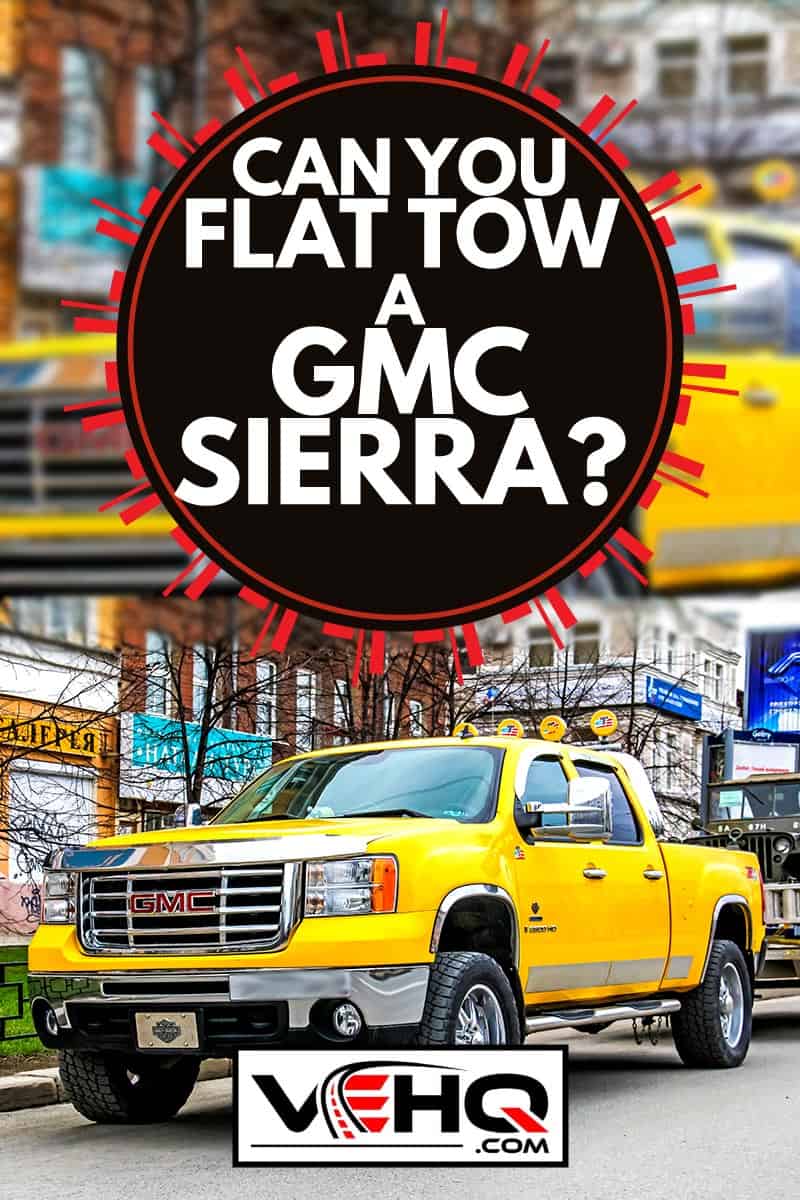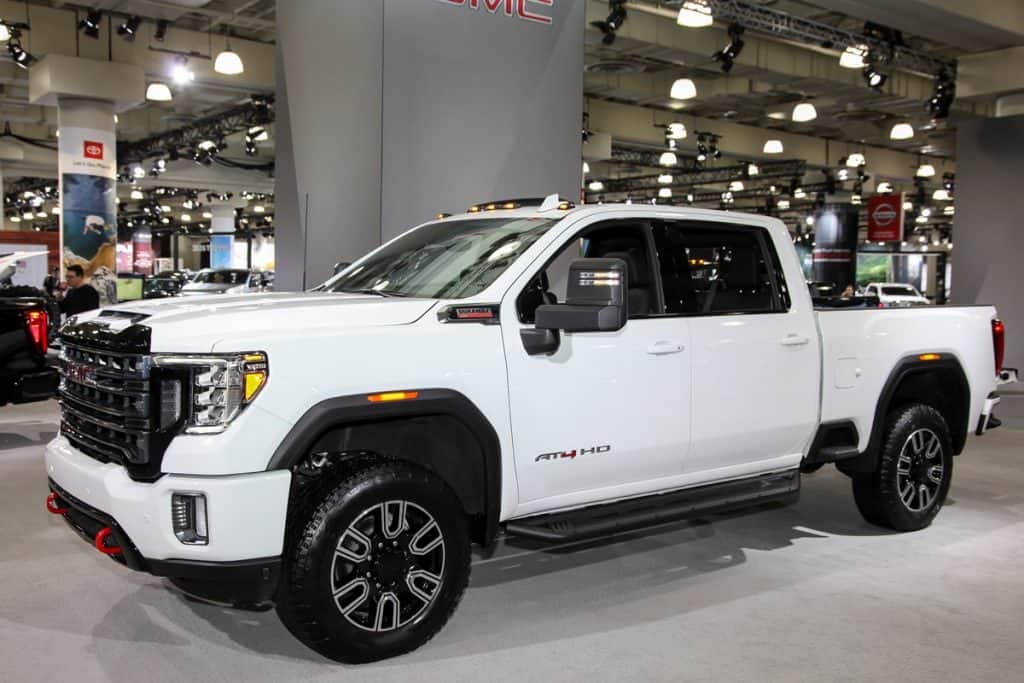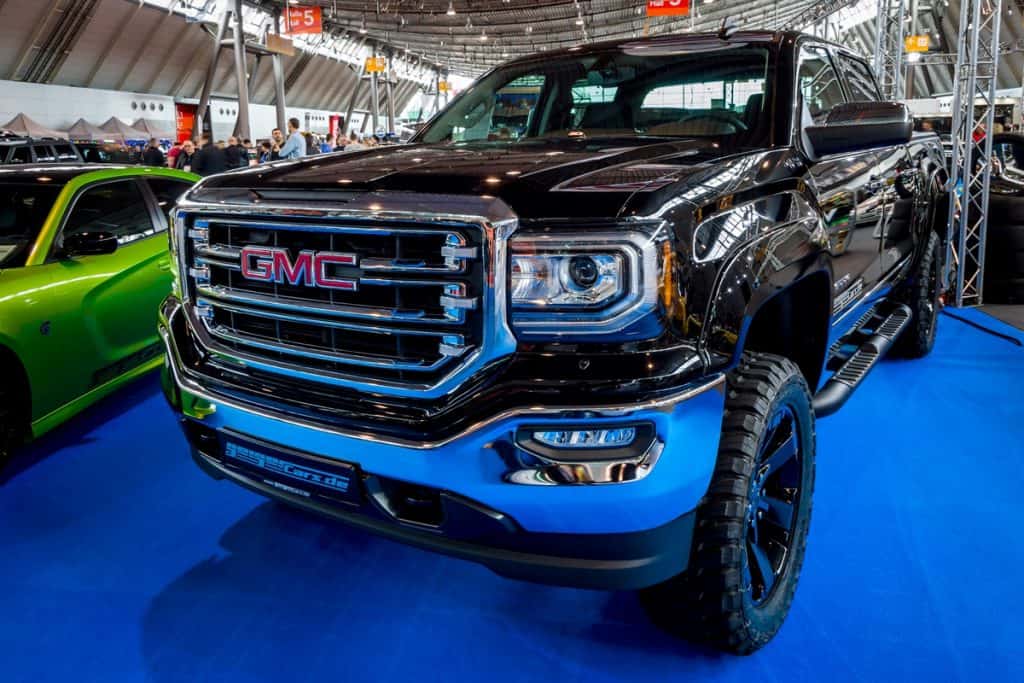If you’ve ever had to tow a vehicle you know one thing at least, you do what’s possible, safe, legal, and available. For towing in general, there are three primary methods. They are flatbed towing, two-wheel towing, and flat towing.
If you don’t have a flatbed or two-wheel trailer with which to do your towing, then you have to do a flat tow. If you’ve got a GMC Sierra you need to tow, and only have a tow bar with which to do it, you’ll be glad to hear that you can, indeed, tow a GMC Sierra. However, it's very important to note that you cannot flat tow a Sierra with two-wheel drive or a single-speed transfer case. Attempting this could seriously damage your vehicle's drivetrain.
As a side note, you can also flat tow the GMC Canyon, Yukon, and Terrain.
With that out of the way, we’re going to cover the basics of flat towing. Before you attempt to flat tow your Sierra, make sure you know what you’re doing. If you’ve never towed a vehicle before, and in-person help is available, it is strongly recommended that you avail yourself of that help.
Mistakes when towing a multi-thousand-pound piece of machinery can be costly, and deadly. So it’s important that you get it right the first time.

How to Flat Tow With a Tow Bar
Flat towing is also known as “four wheels down towing.” Performing a flat tow with a GMC Sierra, or any other vehicle which can be flat towed, requires a few pieces of essential gear. These are usually one-time purchases that will last you virtually forever. Once you get your tow bar set up installed correctly, you’ll have it down pat. The big danger is getting something wrong on your first try. This is why we recommend having someone with prior experience working with you if possible.
If you plan to do a lot of towing after this, you will have everything you need. So learning this is well worth your time.
The Three Types of Tow Bar
There is a shortlist of tow bar types to choose from. They are:
- Self Aligning Coach Mounted Receivers
- Self Aligning Vehicle Mounted Receivers
- Rigid A-frame tow bars
More often than not, the best option is the Self Aligning Coach Mounted Receiver. Because it is self-aligning, it can be adjusted side to side easily. This type of tow bar is much more forgiving than the others. Precise driving is necessary to use an A-Frame tow bar during coupling since they do not self-adjust. With more experience, one of the other two types of tow bars might be more efficient. But for beginners, we recommend the Self Aligning Coach Mounted Receiver.
Steering
Before hooking your vehicle to a tow bar, it must be in good alignment. A vehicle with poor alignment can be driven in relative safety. But when towed, there’s no driver to correct it. Therefore, near-perfect alignment is necessary for a flat tow. If you can’t be sure of the alignment, you cannot flat tow safely and it’s best to go with a flatbed or two-wheel tow trailer. You should also make sure the steering is unlocked so that the towed vehicle can follow the turns of the towing vehicle.
For most cars and trucks, that will require you to leave the keys in the ignition and leave it in the “run” position. This will also require you to find a way to prevent the battery from running down, especially if it’s a long trip. On older vehicles with a less responsive return to center function, people would tie a bungee cord from the brake pedal to the bottom of the steering wheel.
This should not be necessary with a GMC Sierra, but it might be a helpful option. The advantage of this is it helps ensure the wheel will not turn so far that it locks up the steering, which would be a big problem.

Electric Components
You can use the more modern lever-operated or latch-type disconnects for the electrical system of your towed vehicle. But many experienced people will simply opt for simple marine-style battery terminals. These make it easy and quick to disconnect and pull the positive cable before you begin to tow.
When it comes to hooking up the signal lights, there are inexpensive magnetically attaching lights that you can slap onto the vehicle being towed. However, if you’re going to be flat towing frequently, it might be best to learn how to wire into the towed vehicle’s existing lighting circuit.
There are a lot of lighting options that are fast and easy. If you’re towing for the first time, chances are you want to do it as simply as possible. One good resource is Etrailer.com. There, you’ll find lots of lighting options to choose from.
Something you might want to keep in mind is that long cords will tangle when you store them. That means they might not work the second time you go to use them, or they can get caught on any number of things during your tow trip. Even if such an accident is unlikely, it can be very unpleasant.
Connection
No matter which of the above tow bar options mentioned above you go with, the most important thing is that your tow vehicle and your towing vehicle don’t part ways unexpectedly. It’s important to invest in a good, high-quality tow bracket. You should at minimum have a Grade 5 safety chain, and mounting brackets with a very solid attachment point. You do not want any set of welds to be the only thing standing between you and watching your GMC Sierra fade into the horizon behind you.
Adding brackets is a good way to layer on extra security. We recommend using a USA-made, high-quality tow bar, and attachment brackets. The brackets should be bolted as well as welded in place, and the bolts should have good, heavy-duty washers on the back.
As an added measure, consider running your tow hitch chain through the front shackle. That way, in the unlikely event that the entire front bumper becomes detached, or if the tow bar fails, your vehicle will still be attached securely, giving you more than enough time to pull over and remedy the problem or call in AAA.
Reading the towing section of your owner's manual will also help you ensure that you do it all properly.

Drivetrain
No matter how you cut it, towing puts extra strain on the vehicle doing the pulling as well as the one being pulled. In the ideal situation, you would have nothing spinning in your drivetrain. More often than not, you’re going to want to put the transmission into park if it is automatic and put it in first gear if it is manual. Putting an automatic in park disengages the internals of the drivetrain, and putting a manual transmission in gear stops the internals from spinning.
To make sure to get it right, check with your owner’s manual, or even consult the manufacturer. Most transmissions do not have lubrication to protect against freespin, and leaving them in neutral can be a death sentence for the drivetrain.
With an automatic transmission in park or a manual transmission in first gear, you will allow the driveshaft to spin freely. Of course, we would prefer no movement at all in the drivetrain- but that is only possible with a flatbed tow. Most manufacturers recommend disconnecting the driveshaft at the axle and hanging it up out of the way, but that is too much to ask of most drivers.
Follow these instructions as closely as possible. Consult your owner’s manual, and ask for help from an experienced person if one is available. Take it slow on your first tow trip, and be ready to pull over and inspect your rig at the first hint of trouble.
If you're more of a visual person, this ">Youtube video may help you out with the whole process.
In Closing
We hope that you now feel fully equipped to flat tow your GMC Sierra. With some practice, you'll have the process down in no time. Enjoy your travels and remember: safety first!
Before you go, you may find this article interesting:

do not put in prk or 1st in a std , as that will spin the engine as well
So a new GMC Sierra SLT you would need to order the X31 pkg to get the 2 speed transfer case?? It looks like without that package you only get a single speed transfer case.
Choosing the right tow bar and ensuring precise alignment are crucial steps to ensure a safe towing experience. Additionally, your suggestions regarding the steering, electrical components, and secure connections further enhance the overall safety measures. It’s also important to note that referring to the owner’s manual is invaluable for specific instructions and guidelines tailored to the GMC Sierra model. As an additional tip, regular maintenance checks on the towing equipment, such as the tow bar and brackets, will help ensure their reliability and functionality.
Safety is paramount when flat towing, and your emphasis on seeking in-person help and ensuring proper alignment before towing is essential. I agree that the Self Aligning Coach Mounted Receiver tow bar is a great option for beginners, given its forgiving nature. Additionally, it’s crucial to take precautions to prevent the battery from running down during the tow. Keep sharing such valuable towing tips to ensure safe and successful towing experiences!